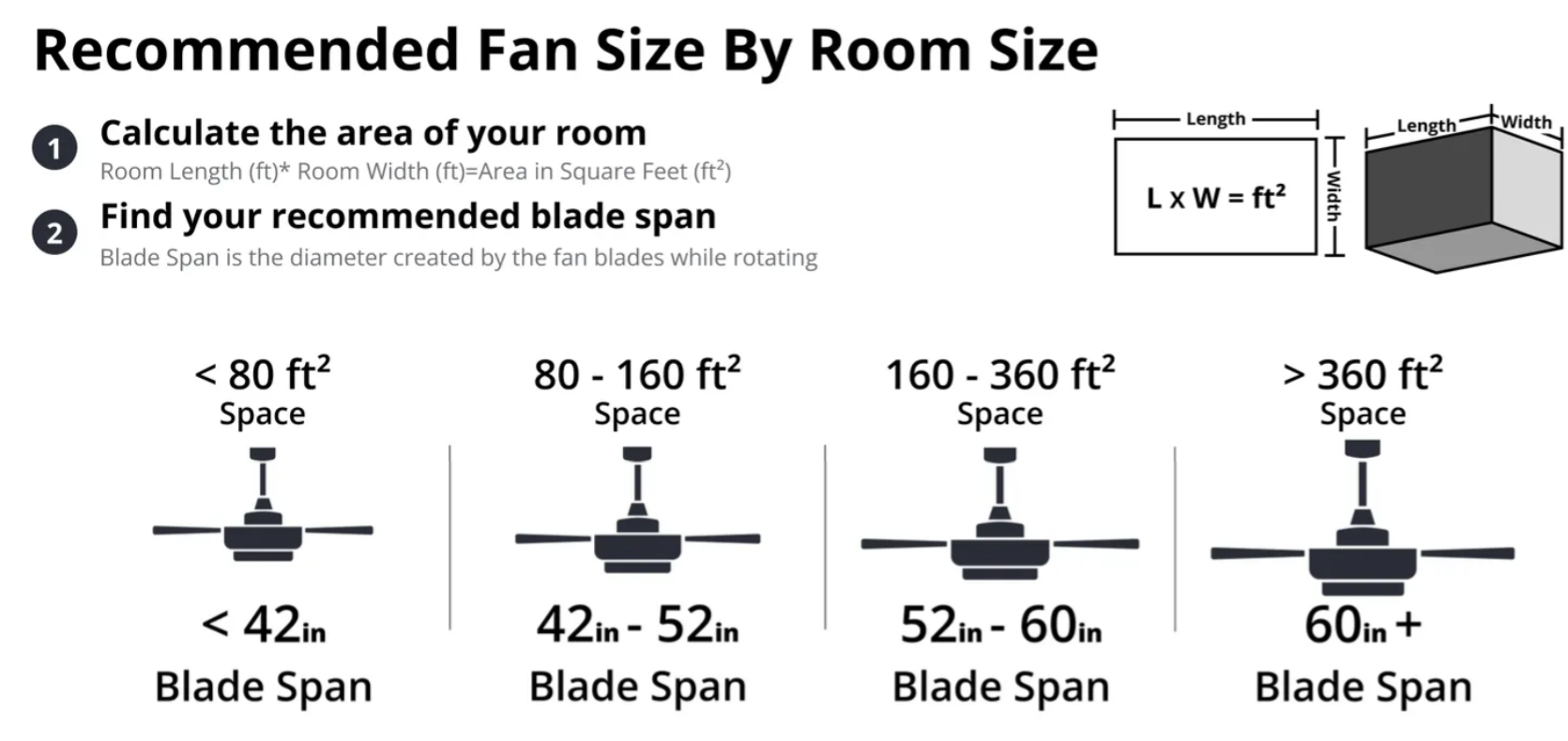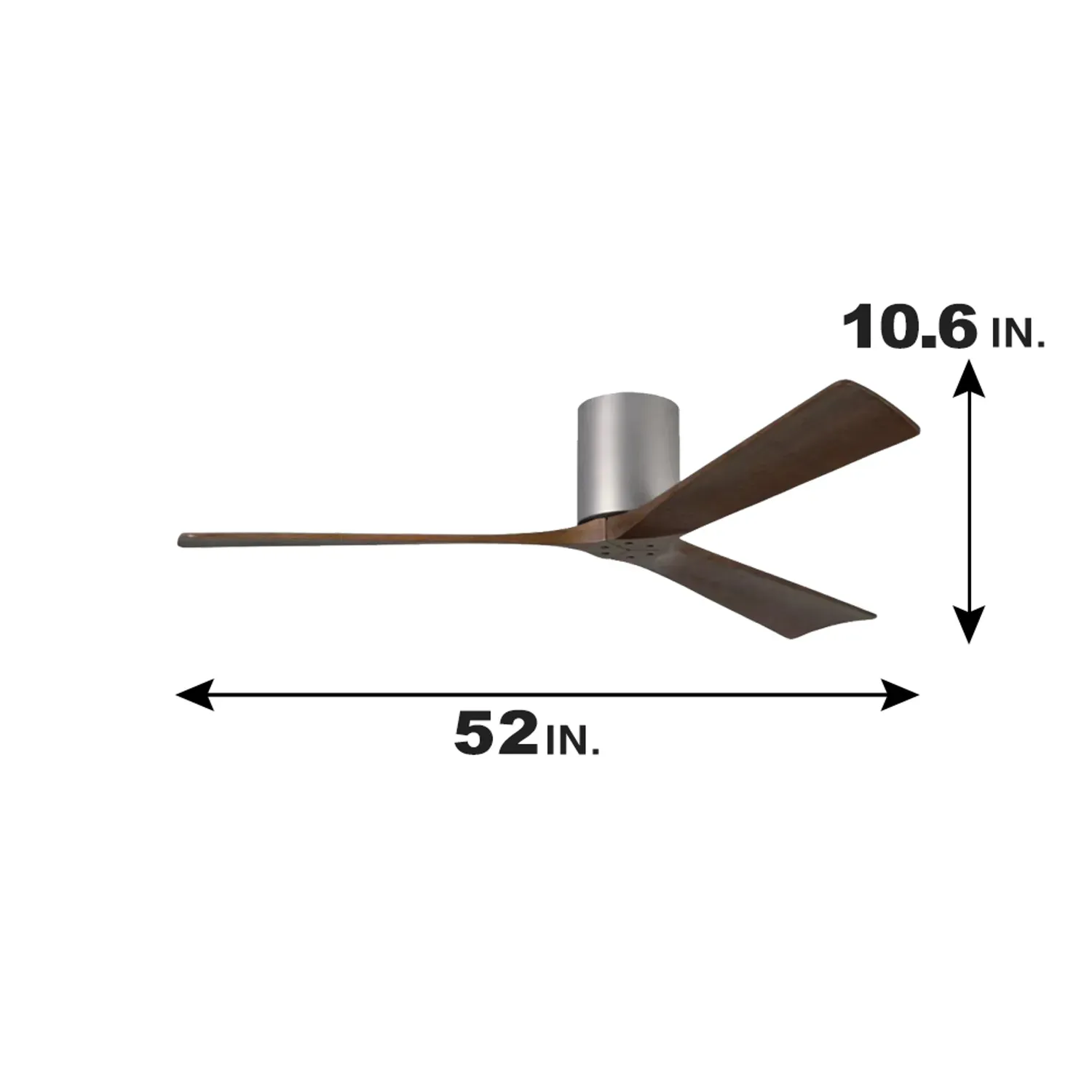We accept OEM & Customization. Low MOQ, Easy To Start. MOQ: 50 PCS.
How to Measure a Ceiling Fan for Replacement?
Learn how to measure a ceiling fan for replacement with our detailed guide. Ensure a perfect fit and style update for your home with accurate measurements and tips.
Ceiling fans bring comfort and style to a room. Choosing the right size is important. A fan that’s too small won’t circulate enough air. On the other hand, a fan that’s too large can overpower the space.
Measuring for a replacement fan is easy. You just need a tape measure, stepladder, and a few minutes. By following simple steps, you can make sure your new fan fits well and works properly in your room. Let’s look at how to measure a ceiling fan for replacement.
Preparing for Ceiling Fan Size Measurement
To get started, gather the following tools:
- Measuring tape: A standard or digital tape measure to ensure accurate dimensions.
- Ladder: A stable ladder tall enough to reach the ceiling fan.
- Notepad and pencil: For jotting down measurements and any additional notes.
Safety Tips
- Turn off the power: Before you start, switch off the power to the fan at the circuit breaker to avoid electrical hazards.
- Secure the ladder: Ensure the ladder is on a flat surface and is securely positioned to prevent falls.
- Wear appropriate footwear: Use non-slip shoes to maintain a good grip on the ladder.
What are Ceiling Fan Dimensions?
Key Measurements for a Ceiling Fan:
- Blade Span (Diameter): This is the total width of the fan from blade tip to blade tip. It determines the amount of air the fan can move and should match the room size.
- Drop Length: The distance from the ceiling to the bottom of the fan, crucial for ensuring adequate headroom and optimal airflow.
- Blade Pitch: The angle of the blades, which affects the efficiency of air movement. Steeper pitches usually move more air.
Types of Ceiling Fans
Choosing the right type of ceiling fan depends on your ceiling height and room size:
- Standard Fans: Suitable for rooms with ceilings 8 feet or higher.
- Low Profile (Hugger) Fans: Ideal for ceilings lower than 8 feet as they mount directly to the ceiling.
- Dual-Motor Fans: Feature two adjustable fan heads for larger areas.
- Outdoor Fans: Designed to withstand moisture and varying temperatures for use in patios or porches.
Step-by-Step Guide for Measuring a Ceiling Fan Size
Measure the Blade Span
Use a Tape Measure
To determine the blade span of a ceiling fan, follow these steps:
- For fans with an even number of blades: Use a tape measure while standing on a stepladder. Measure from the tip of one blade to the tip of the opposite blade.
- For fans with an odd number of blades: Measure to the center of the fan, then multiply by two.
When measuring the distance from the ceiling to the fan blades:
- Stand on a stepladder.
- Hold the tape measure to the tip of a blade.
- Ensure the fan is off and the blades are not moving.
Calculating the square footage of a room:
- Measure the length and width of a wall.
- Multiply these dimensions together.
- If measured in inches, divide by 144.
These measurements help determine the right fan size considering ceiling height, downrod length, and choices from various fan sizes and finishes. Major manufacturers like KBS Ceiling Fans offer diverse options.
Consult the Size Ratio Chart
Before using the Size Ratio Chart for a ceiling fan, start by measuring the room’s square footage and the current ceiling fan sweep. The square footage is found by measuring the room’s length and width. Measure the ceiling fan sweep to determine the right blade size needed.
The Size Ratio Chart guides in selecting the correct fan size for a space. It prevents choosing a fan that’s too small and provides poor air circulation, or one that’s too big, dominating the room.

Determine the Ceiling Fan Height
Measure from Ceiling to Fan Blades
To measure the distance from the ceiling to the fan blades, follow these steps for safety:
- Make sure the fan is turned off and the blades have completely stopped spinning.
- Stand on a stepladder and use a tape measure.
- Measure from one fan blade’s tip to the opposite blade for even-numbered blades.
- Measure to the center for odd-numbered blades.
- Keep the fan blade tips at least 18 inches away from each wall to prevent accidents.
When installing ceiling fans with lights, hang them slightly higher to accommodate the light space.
Considering these factors when determining fan size and placement helps with proper air circulation and temperature control in the room.
Considerations for Ceiling Height
When choosing the right ceiling fan size:
- Measure the room’s length and width to calculate the square footage.
- Use size ratio charts to find the ideal fan size for good air circulation.
Consider the ceiling height:
- For ceilings 7-9 feet, go for low-profile or hugger fans.
- Ceilings higher than 9 feet may need a compatible downrod for proper fan height.
Other factors to consider:
Think about blade size, fan sweep, and clearance from walls or cabinets when selecting a replacement fan.
Assess the Room’s Square Footage
Calculate Square Footage
Calculating the total square footage of a room needing a ceiling fan is easy. Just multiply the length by the width. For example, a 10-by-12 room equals 120 square feet.
To choose the right ceiling fan, it’s important to match its size with the room’s square footage. Measure the length and width of the room, then multiply these measurements.
When installing a ceiling fan, take into account the ceiling height. To ensure optimal air circulation, the fan should be 7 to 9 feet above the floor.
For replacing an existing ceiling fan, use a tape measure to accurately determine the fan’s size. Rooms with low ceilings are best suited for hugger fans or flush-mount ceiling fans.
Consulting a size ratio chart is recommended for fitting new fans in various rooms. Determine the appropriate downrod length for rooms with higher ceilings.
For help with finding a suitable downrod or finishes, contact the customer service of major fan manufacturers for guidance.
Choose Appropriate Fan Size
To accurately measure the blade span of a ceiling fan, follow these steps:
- Make sure the fan is turned off and the blades are not moving.
- Stand on a stepladder.
- Hold a tape measure from the tip of one blade to the opposite blade tip for fans with an even number of blades.
- For fans with an odd number of blades, measure from the tip to the center and double the measurement.
When choosing an appropriate fan size for a room:
- Consider the length and width of the room.
- Multiply the length by the width to calculate the square footage.
- For L-shaped rooms, divide the area into rectangular sections.
- Measure each section separately and then add the measurements together to determine the total square footage for fan size selection.
Room Size and Fan Size Relation
- Small Rooms (up to 75 sq. ft.): Fans with a blade span of 29-36 inches.
- Medium Rooms (76-144 sq. ft.): Fans with a blade span of 36-42 inches.
- Large Rooms (145-225 sq. ft.): Fans with a blade span of 44-50 inches.
- Great Rooms (over 225 sq. ft.): Fans with a blade span of 50-54 inches or larger.

Key Considerations for Replacement
Compatibility with Existing Wiring
When measuring a ceiling fan for replacement, one important step is checking if the existing wiring can work with the new fan. This is necessary to avoid any problems during installation and while using the fan.
Consulting an electrician to verify the wiring’s compatibility is a good idea. They can help make sure everything fits well so installation goes smoothly. By doing this early on, any potential issues can be fixed, and you can choose the right fan size for the space.
Matching Style and Design
When choosing a replacement fan, aesthetics play a significant role in complementing your room’s décor. Select colors that match or complement the existing palette of the room, including the color of the device itself and any visible components such as faceplates or covers. The material and finish of the replacement should align with your current décor; whether it’s brushed nickel, chrome, or matte black, the finish should enhance the room’s style.
Focusing on Special Features
When selecting a replacement ceiling fan, focusing on key features can ensure you get the best performance and convenience.
Remote Controls and Smart Features
Remote controls offer unparalleled convenience, allowing you to adjust the fan speed and lighting without ever leaving your seat. Look for models that come with wall-mounted holders to keep the remote easily accessible. Additionally, fans with smart home compatibility can seamlessly integrate with systems like Amazon Alexa, Google Assistant, or Apple HomeKit. These smart features enable you to control your fan with voice commands or a smartphone app, adding a layer of convenience and helping you manage energy use more effectively.
Light Kits
Light kits are another crucial aspect to consider. Many ceiling fans come with integrated light kits, saving space and providing ample illumination for your room. It’s essential to ensure that the light kit meets your room’s specific lighting needs. If your chosen fan doesn’t include a light kit, check if it’s compatible with aftermarket options. Pay attention to the type of bulbs used, such as LED or incandescent, and consider the ease of replacing them. Furthermore, some fans offer dimmable lighting, allowing you to adjust the brightness to suit different activities and moods, enhancing the ambiance of your space.
KBS: Purchase Replacement Ceiling Fans in Bulk
At KBS, we specialize in providing high-quality replacement ceiling fans in bulk. Our extensive selection ensures that you’ll find the perfect fans to meet your needs, whether you’re a contractor, property manager, or business owner. We understand the importance of performance, reliability, and style, which is why we offer a range of fans that combine these essential features. Discover how our bulk purchasing options can provide you with the best value and convenience for your large-scale projects. Choose KBS for superior quality and exceptional service in every ceiling fan you purchase.
